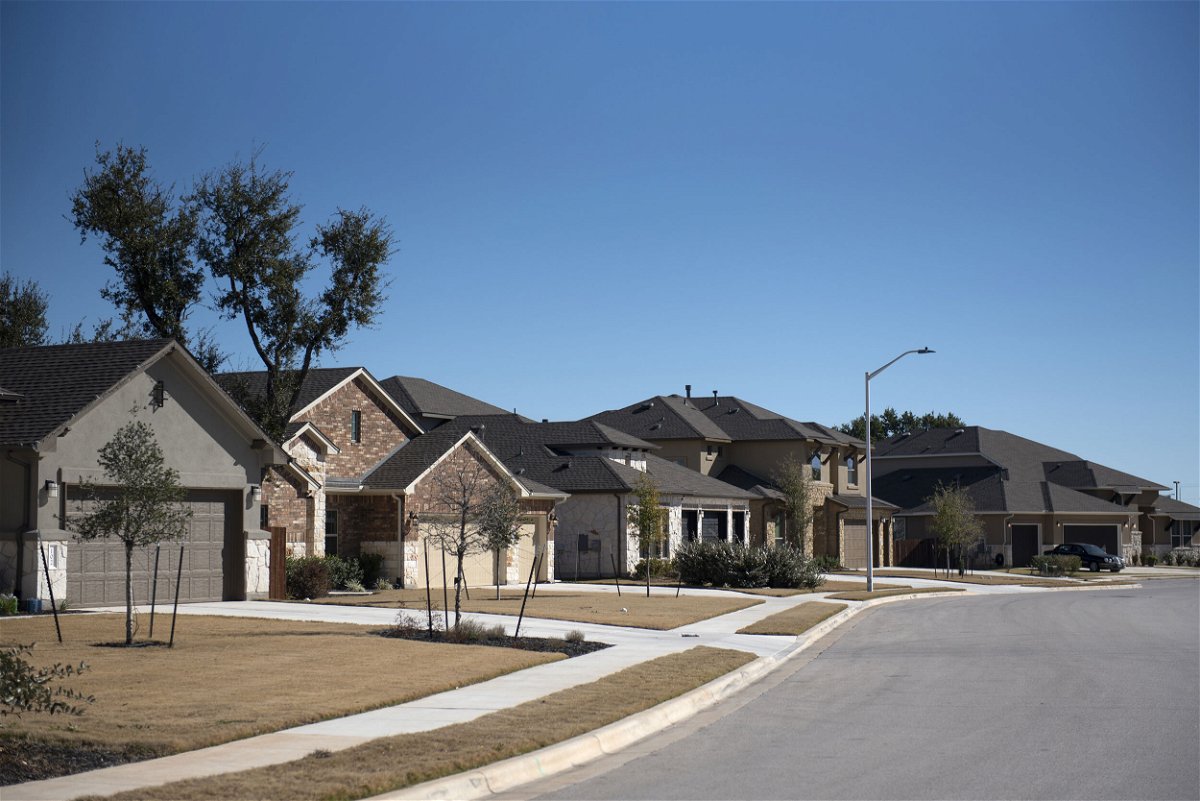As home values soar, the wealth gap grows

Homes stand in Cedar Park
By Anna Bahney, CNN Business
Homeowners saw massive increases in wealth over the past decade, but most of the gains went to the wealthiest US households.
As home prices soared, housing wealth increased by $8.2 trillion over a decade, rising to $24.1 trillion in 2020 from $15.9 trillion in 2010, according to a new report from the National Association of Realtors.
But low- and middle-income households saw a smaller share of the gains. While a majority (71%) of the wealth accumulation went to high-income earners, middle-income households saw only 26%, and low-income households saw just 4%.
In addition, home prices have appreciated so rapidly in some metro areas that new low- and middle-income buyers are priced out of the market entirely.
Phoenix saw the biggest price increase over the decade, that concluded at the end of 2021, with a 275% increase. It was followed by Atlanta; Las Vegas; Cape Coral, Florida; and the towns of Riverside and San Bernardino in California, all of which had increases of more than 200%.
“These escalating home values were no doubt beneficial to homeowners and home sellers,” said Lawrence Yun, NAR chief economist. “However, as these markets flourish, middle-income wage earners face increasingly difficult affordability issues and are regrettably being priced out of the home-buying process.”
Benefits of homeownership
Homeownership is often the leading source of wealth among families, and its benefits can be powerful.
“Owning a home continues to be a proven method for building long-term wealth,” said Yun. “Home values generally grow over time, so homeowners begin the wealth-building process as soon as they make a down payment and move to pay down their mortgage.”
For example, if you bought a typical single-family home 10 years ago for the median price of $162,600, you’re likely to have accumulated $229,400 in housing wealth, according to NAR.
Though the middle-class homeownership rate fell overall, the number of middle-income homeowners increased in over half of the 917 metro areas in NAR’s analysis. In order to determine which areas had a rising middle class, NAR looked for housing markets that had the greatest growth in middle income, owner-occupied homes between 2010 and 2020. Researchers defined a middle-class household as one earning an income of more than 80% to 200% of the area median income.
The top 10 cities with increasing middle-income households during that decade were Phoenix; Austin; Nashville; Dallas; Houston; Atlanta; Orlando; Portland, Oregon; Seattle and Tampa.
“Middle-income households in these growing markets have seen phenomenal gains in price appreciation,” said Yun. “Given the rapid migration and robust job growth in these areas, I expect these markets to continue to see impressive price gains.”
Challenges for middle- and low-income buyers
But there were also several large cities that saw a drop in middle-class households over the past decade. These include New York, Los Angeles, Chicago, Boston, Detroit, and Philadelphia.
In these and other cities where home prices are rapidly rising, middle- and low-income buyers have struggled to get into the market.
Low-income homeowners comprised a smaller fraction of all homeowners in 2020, at just 27%, the NAR research found, down from 38% in 2010.
While middle-income homeowners increased in number over the decade, they represented a smaller share of homeowners in 2020, at 43%, down from 45.5% in 2010.
The share of high-income homeowners grew, rising to 30%, up from 16.4% in 2010. That is 11.1 million more high-income households in 2020 compared to 2010.
“Homeownership is rewarding in so many ways and can serve as a vital component in achieving financial stability,” said Leslie Rouda Smith, a real estate agent from Plano, Texas, and a broker associate at Dave Perry-Miller Real Estate in Dallas, who is the NAR President. “Now, we must focus on increasing access to safe, affordable housing and ensuring that more people can begin to amass and pass on the gains from homeownership.”
The-CNN-Wire
™ & © 2022 Cable News Network, Inc., a WarnerMedia Company. All rights reserved.